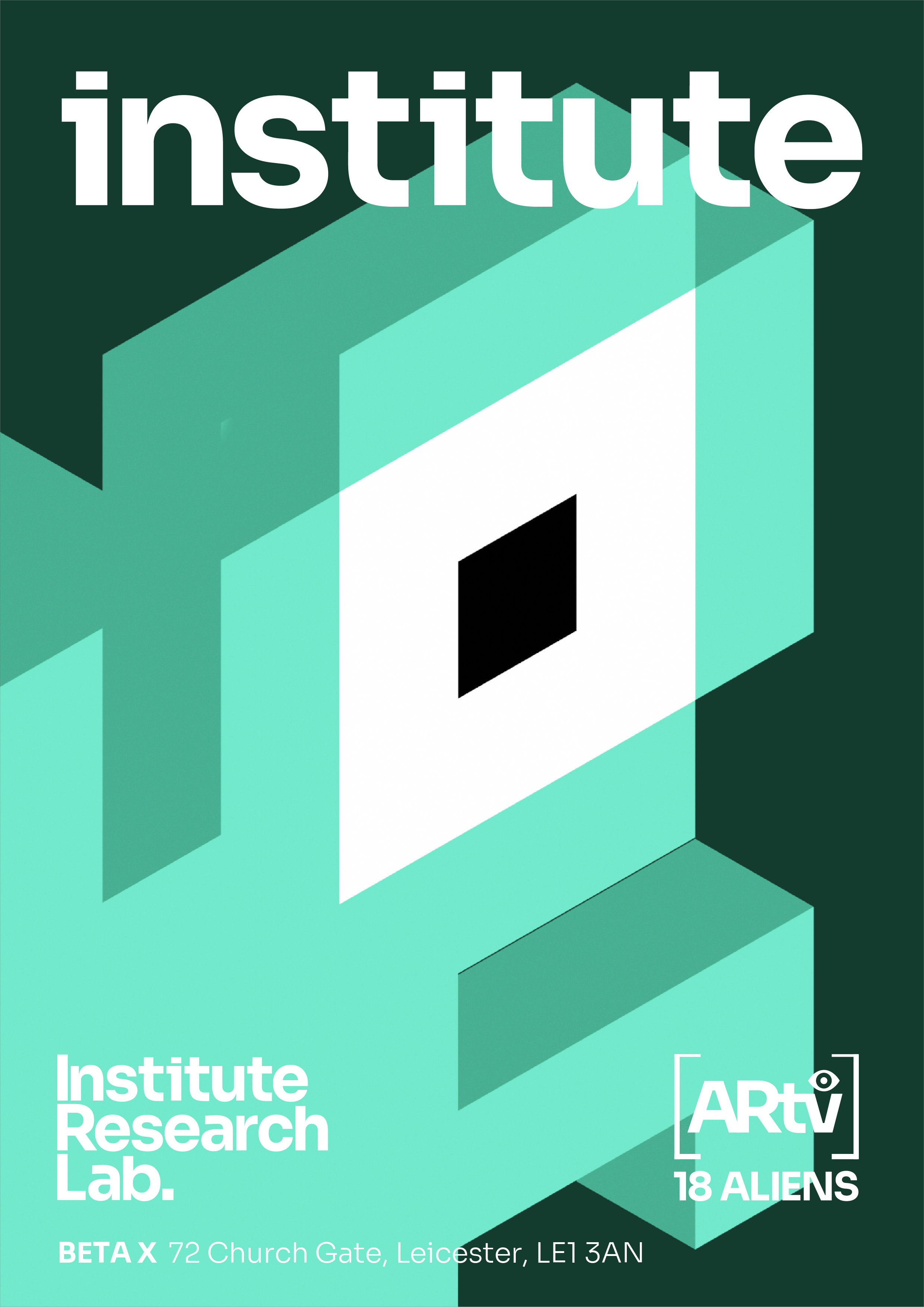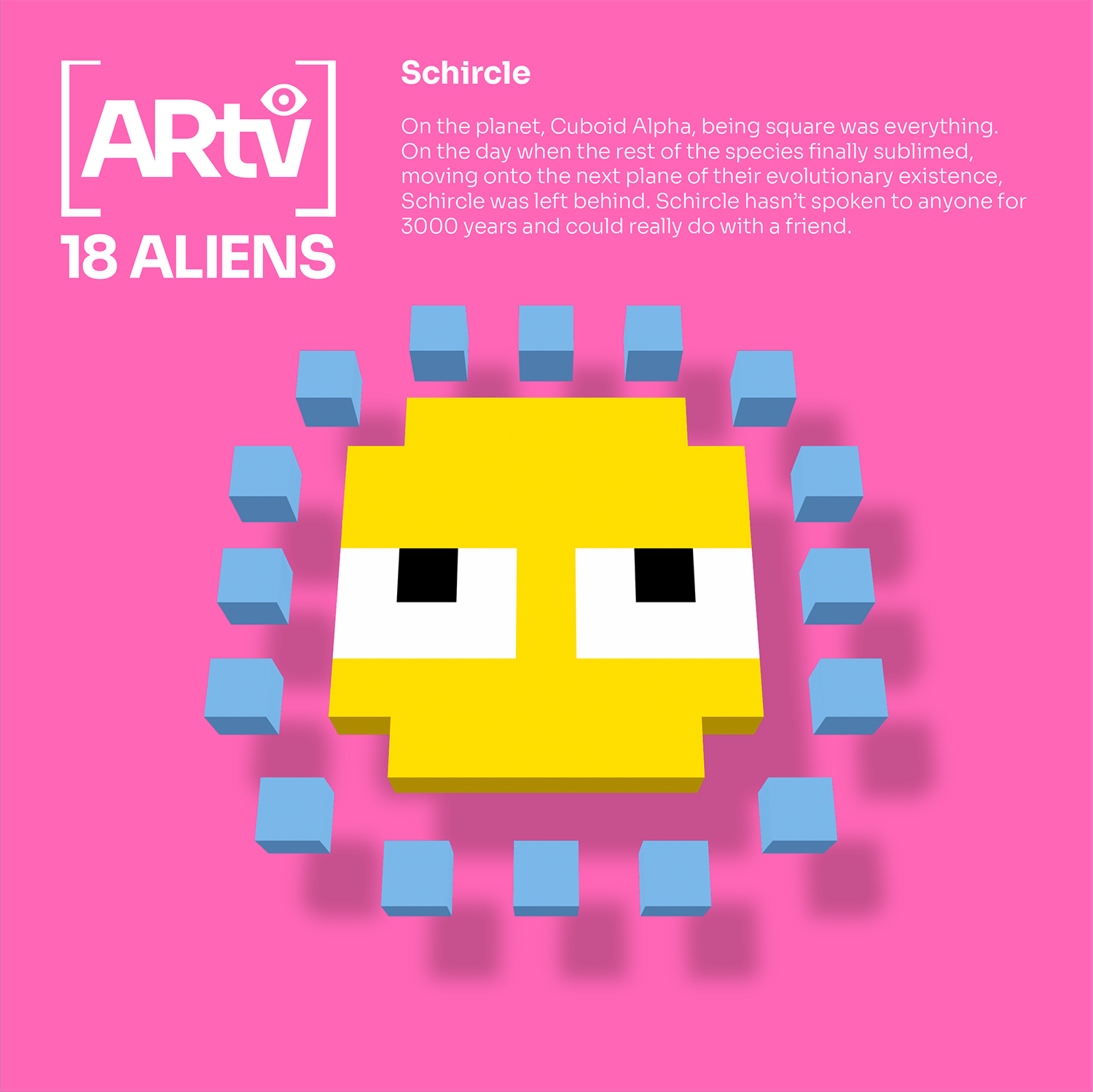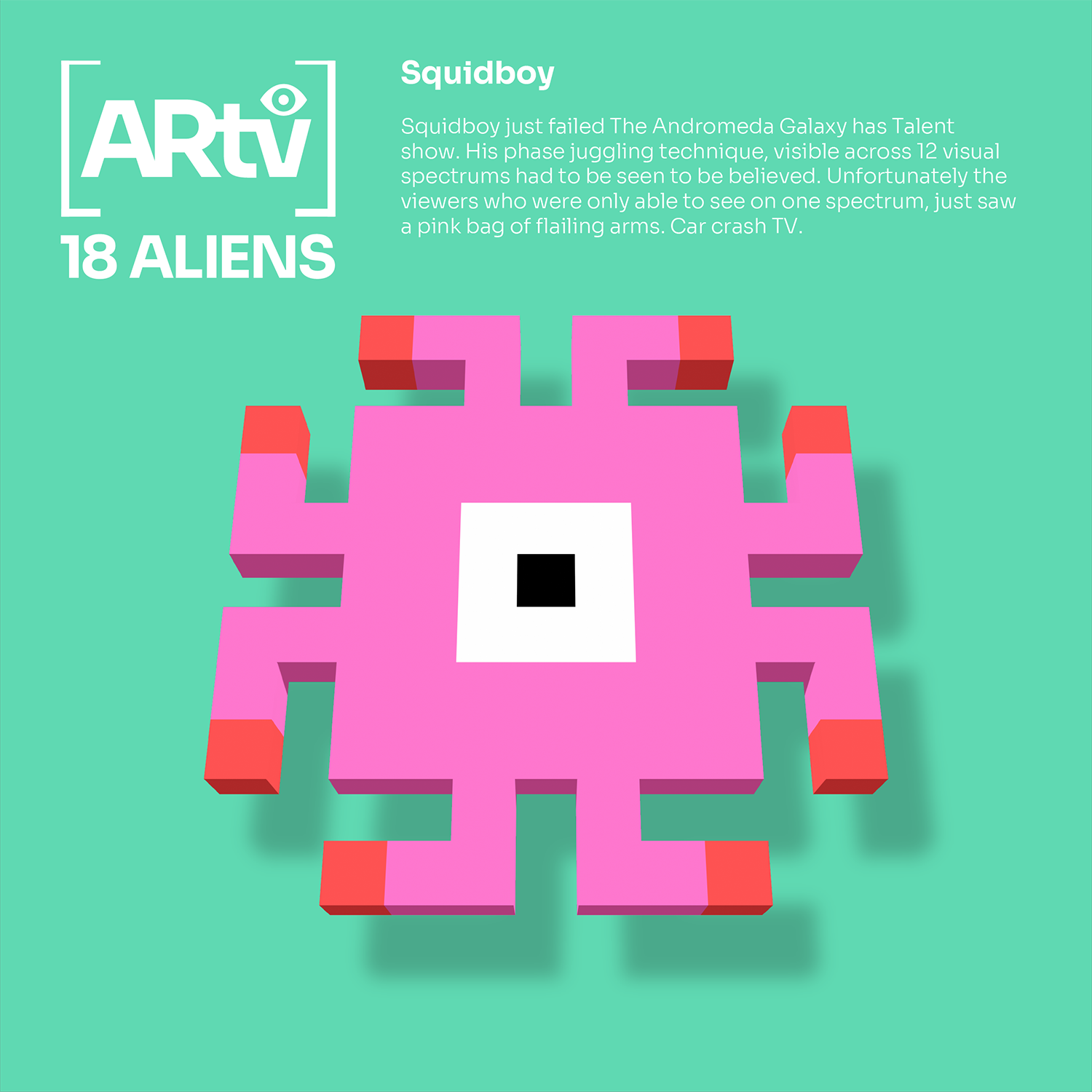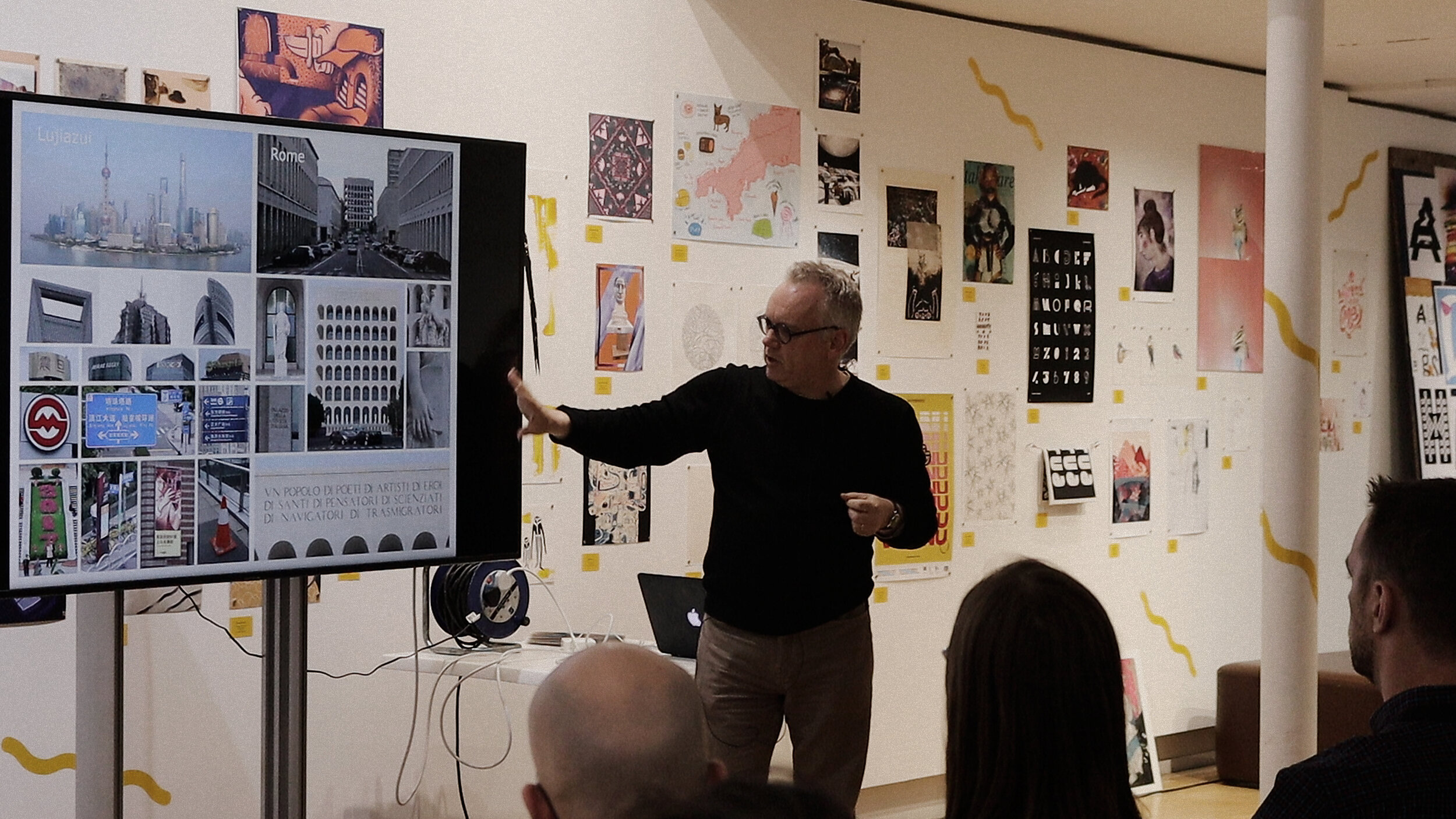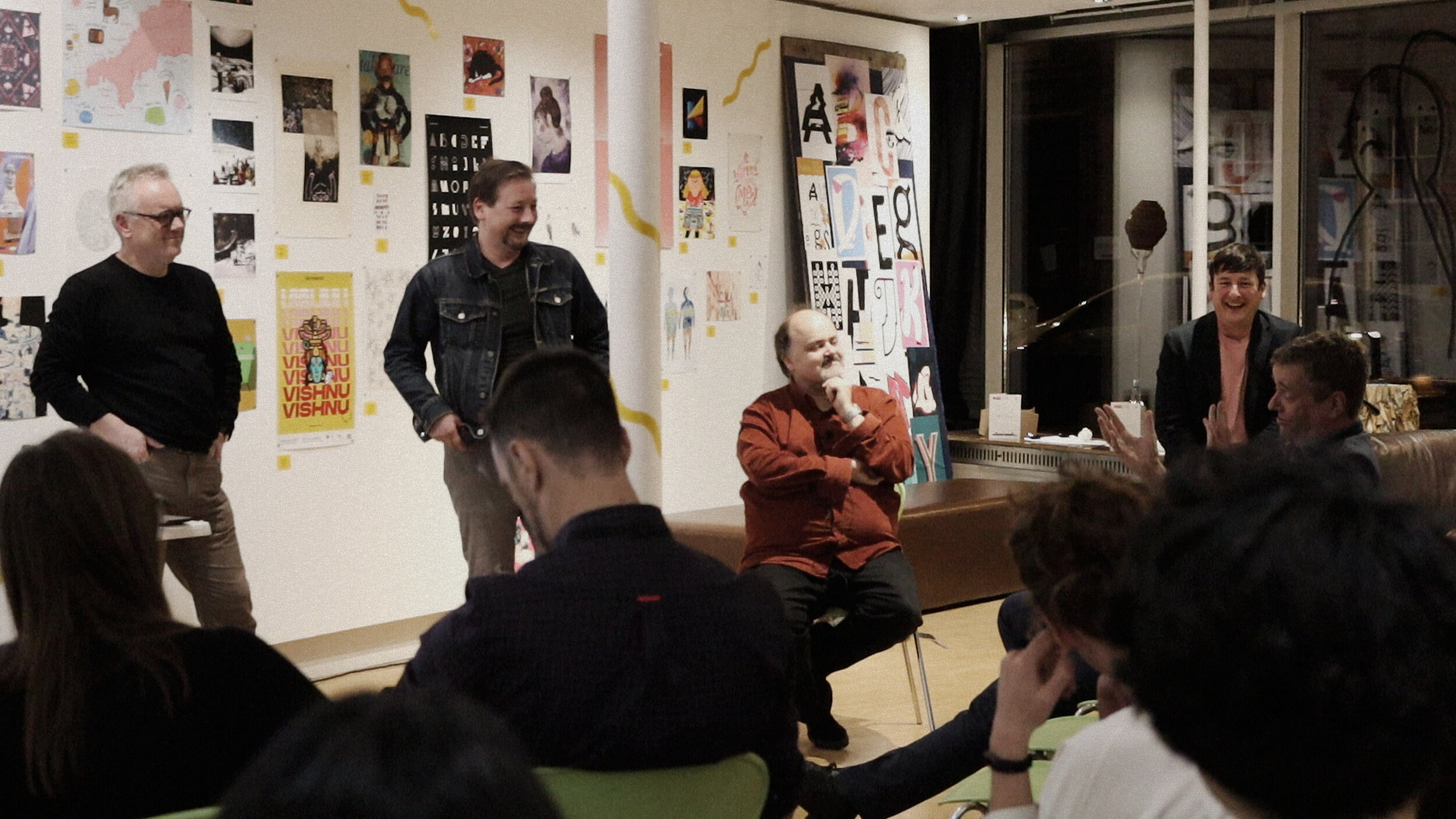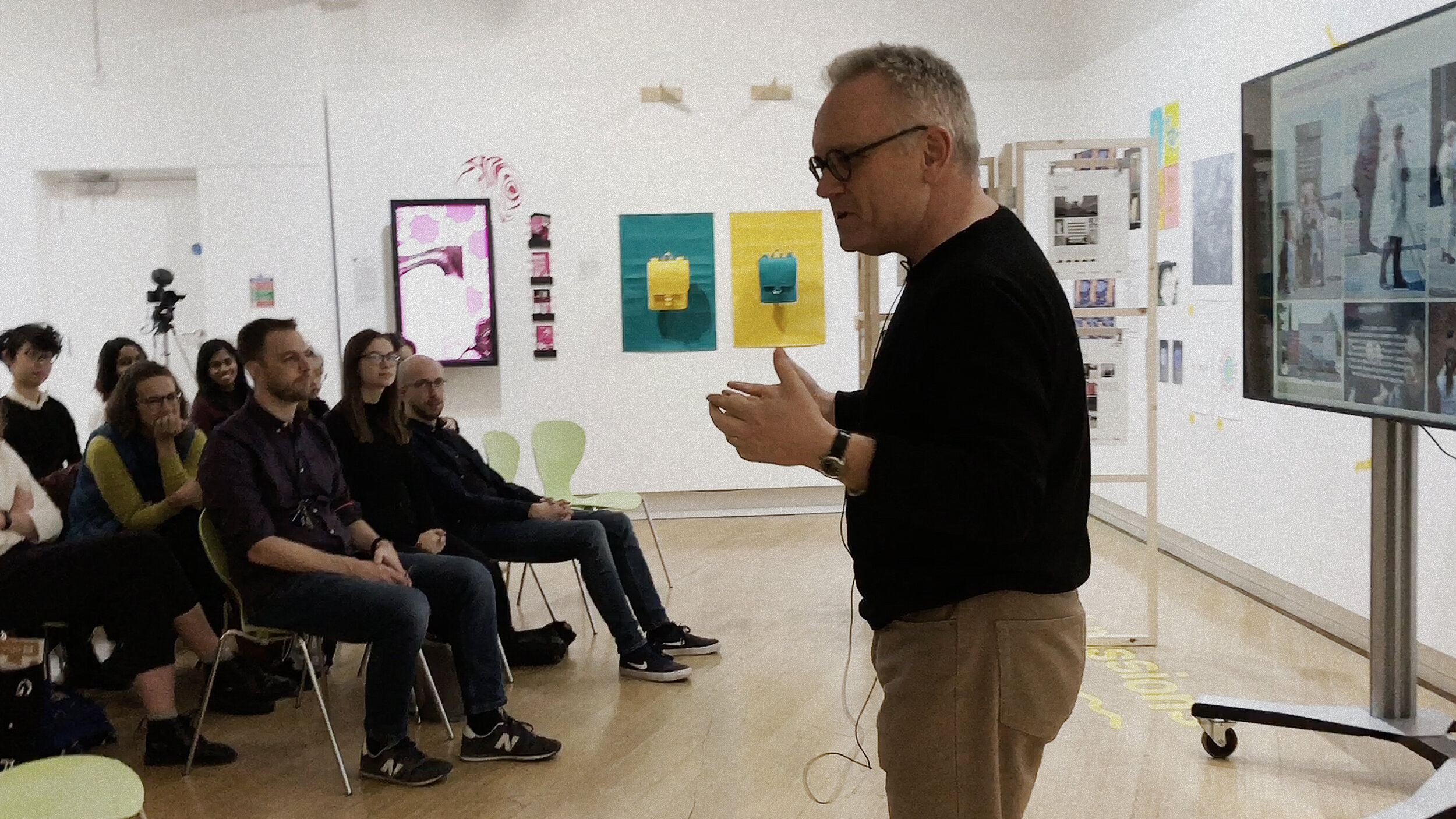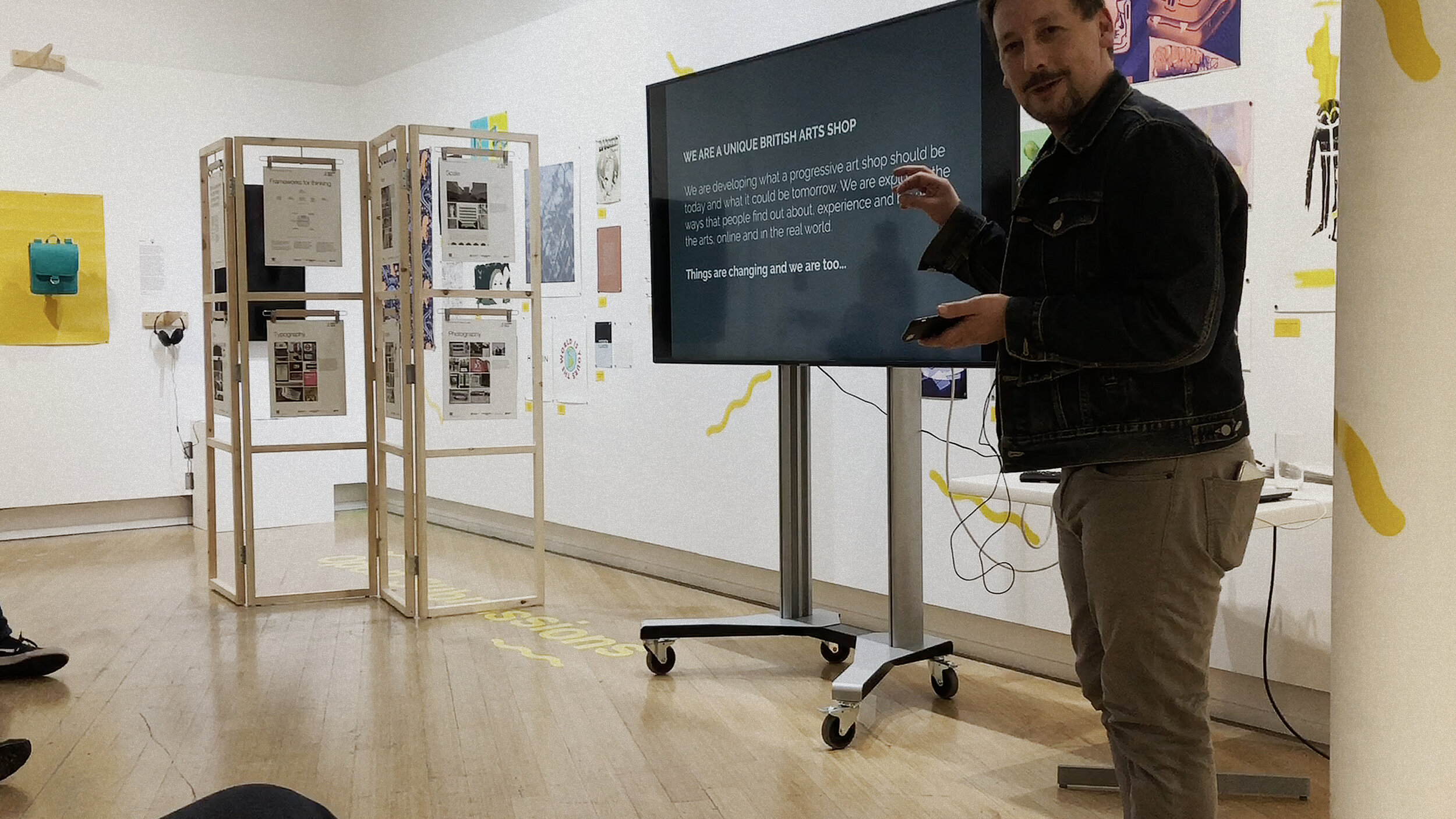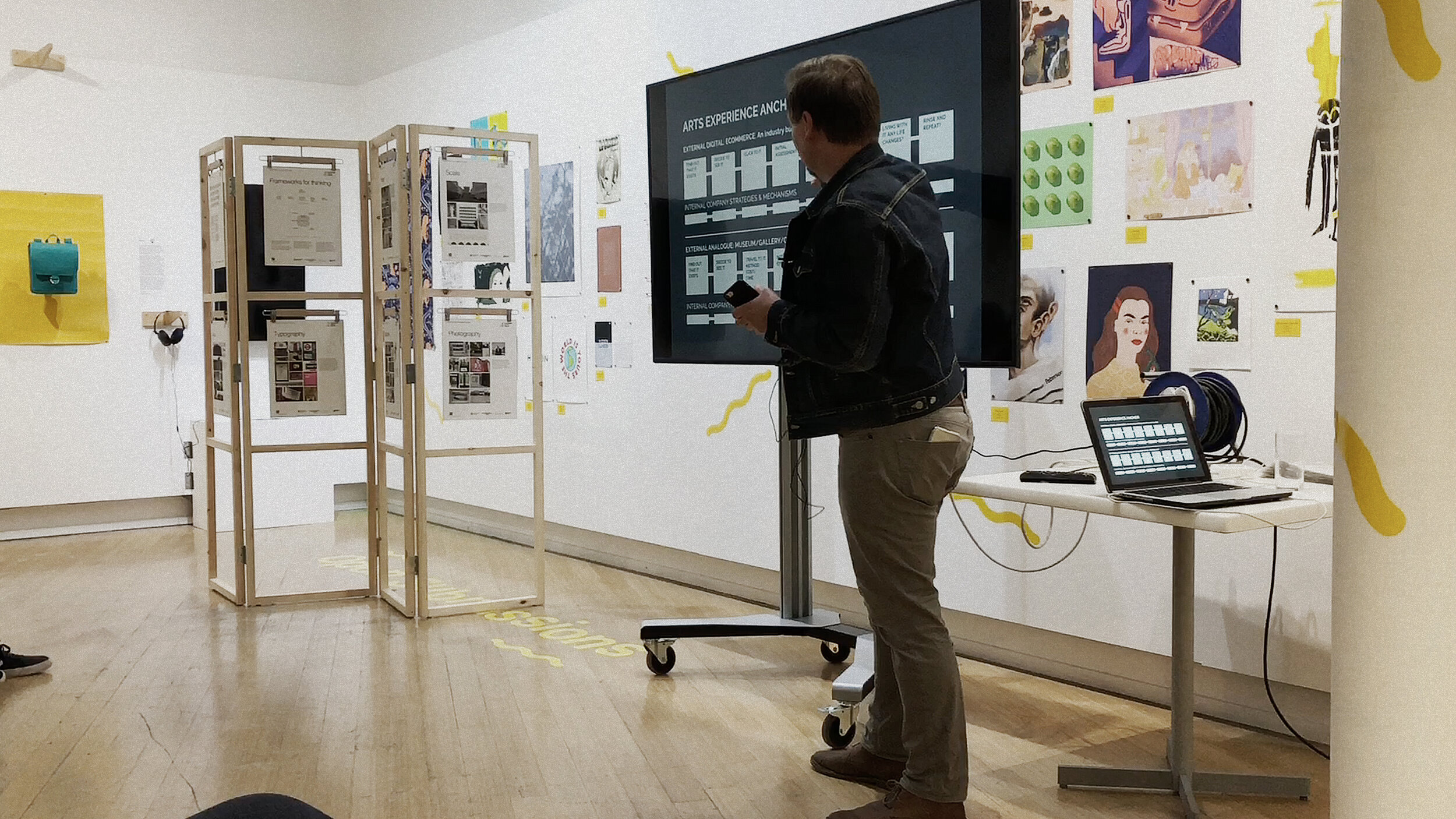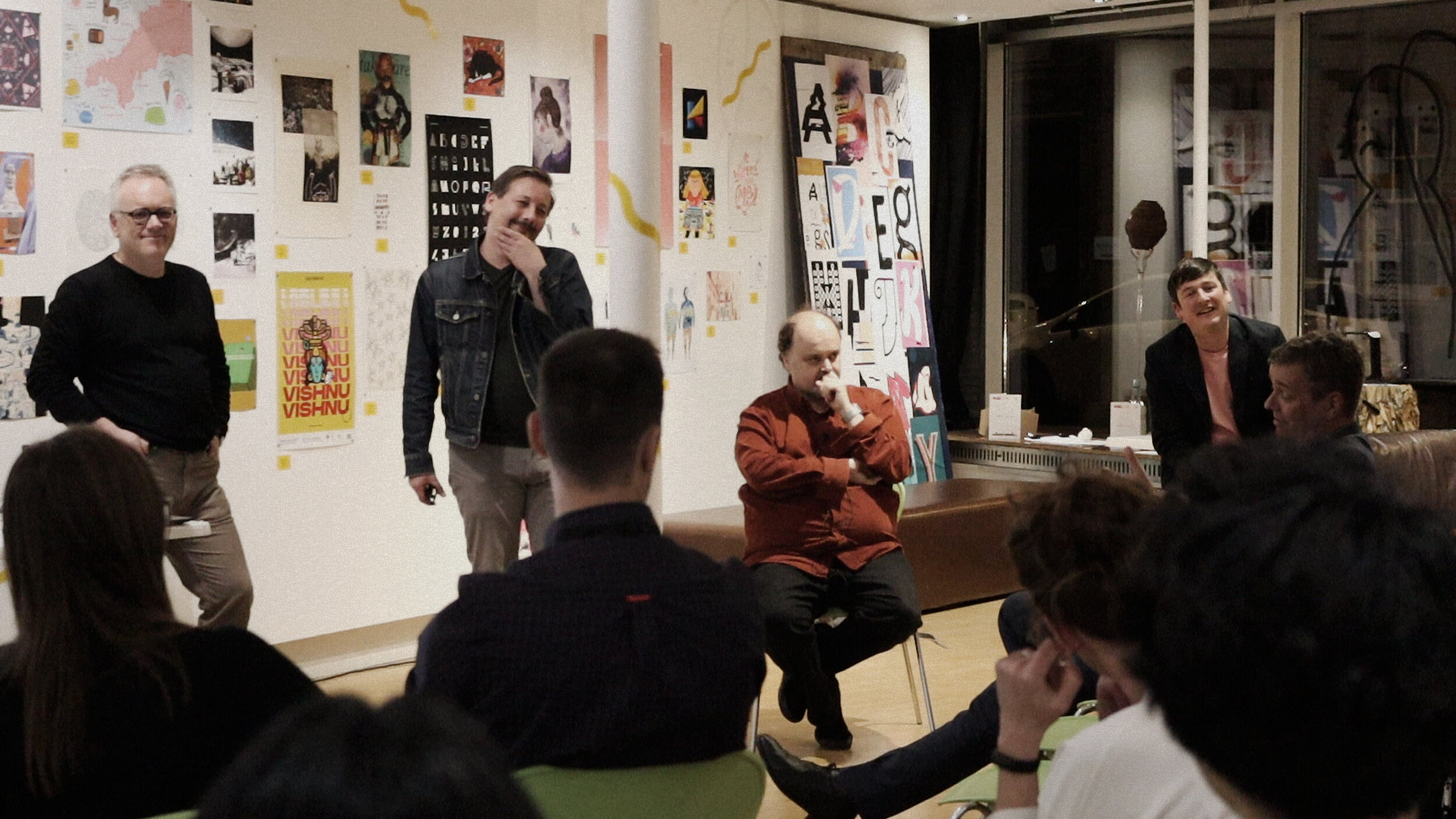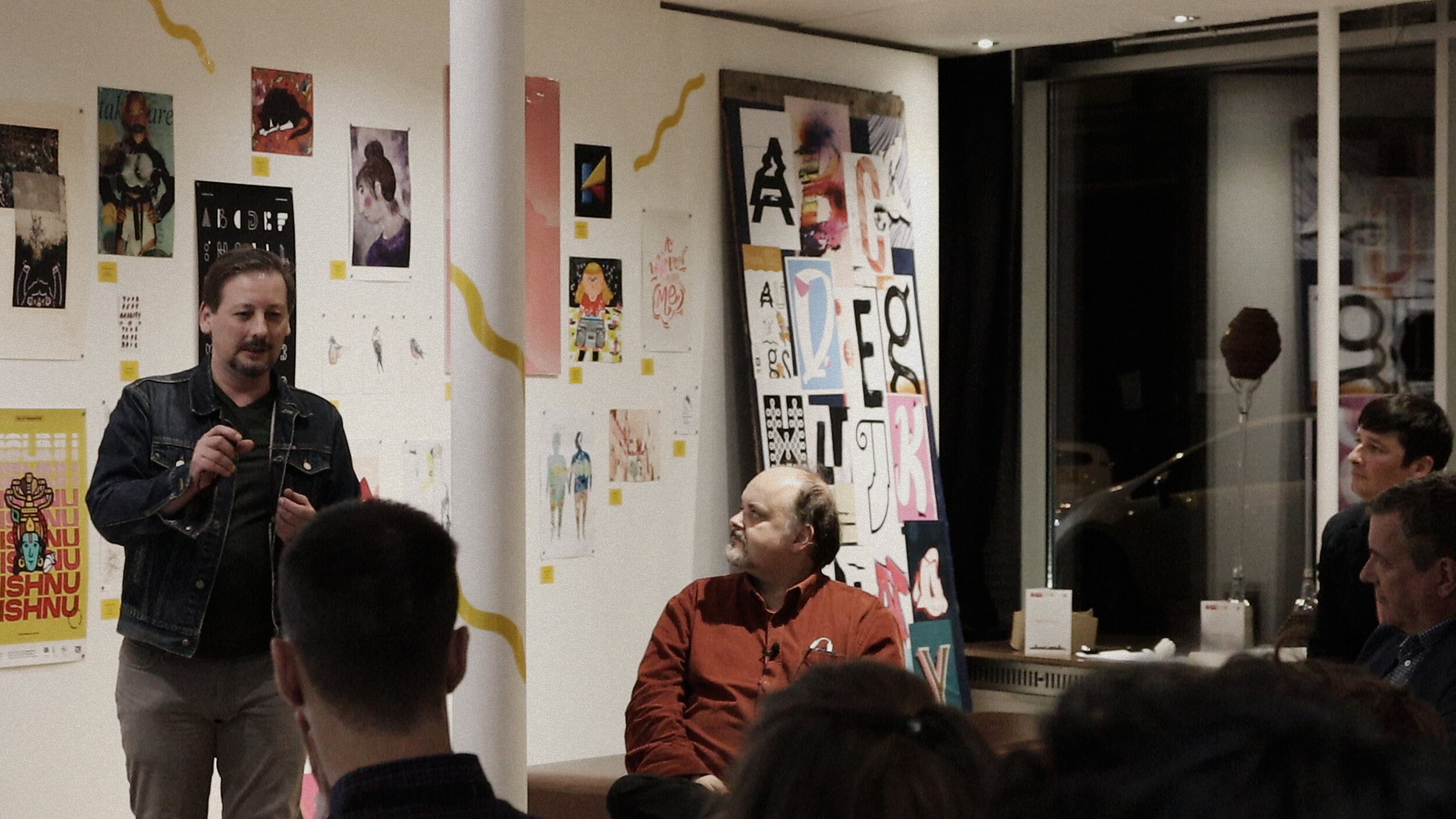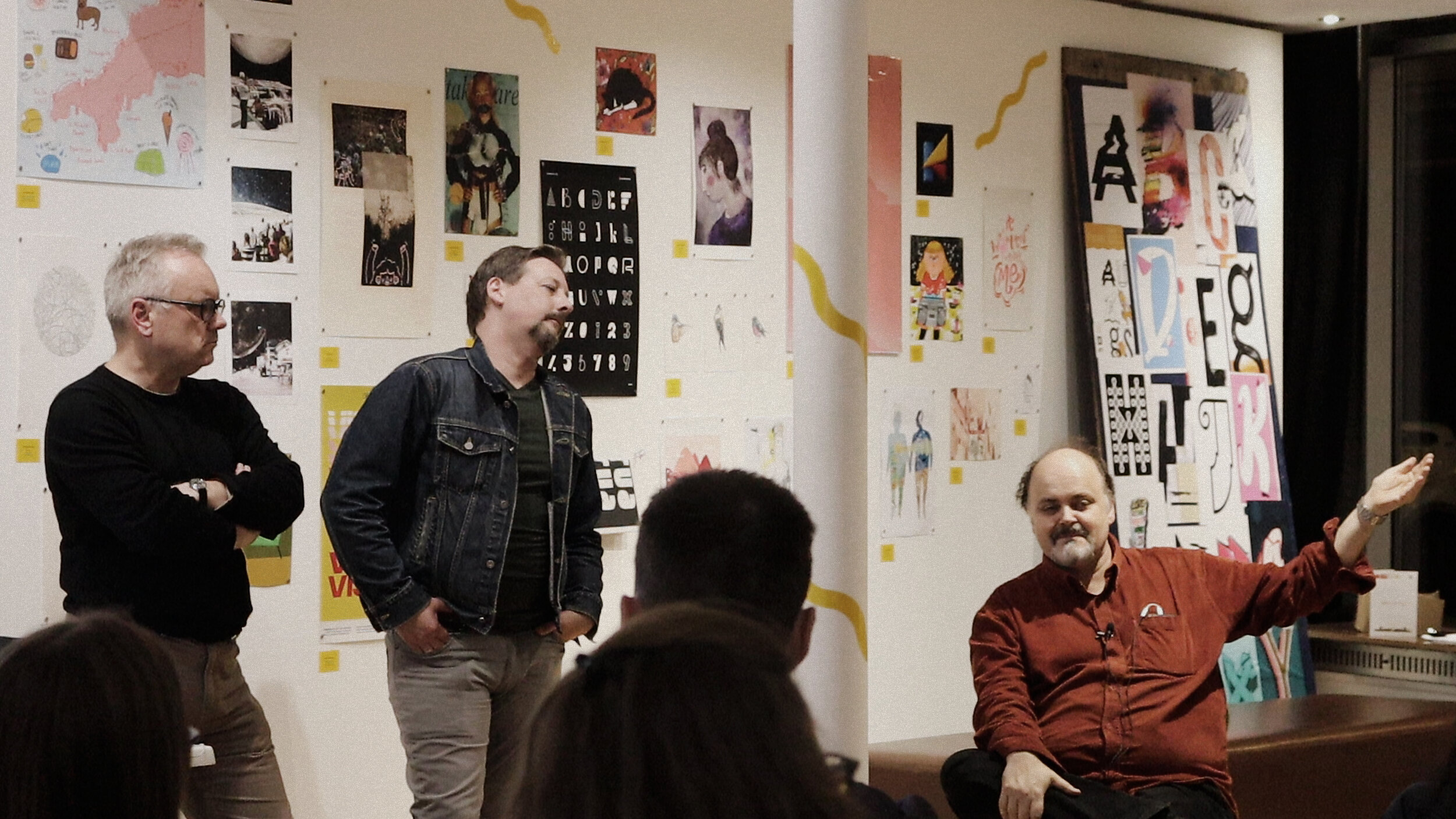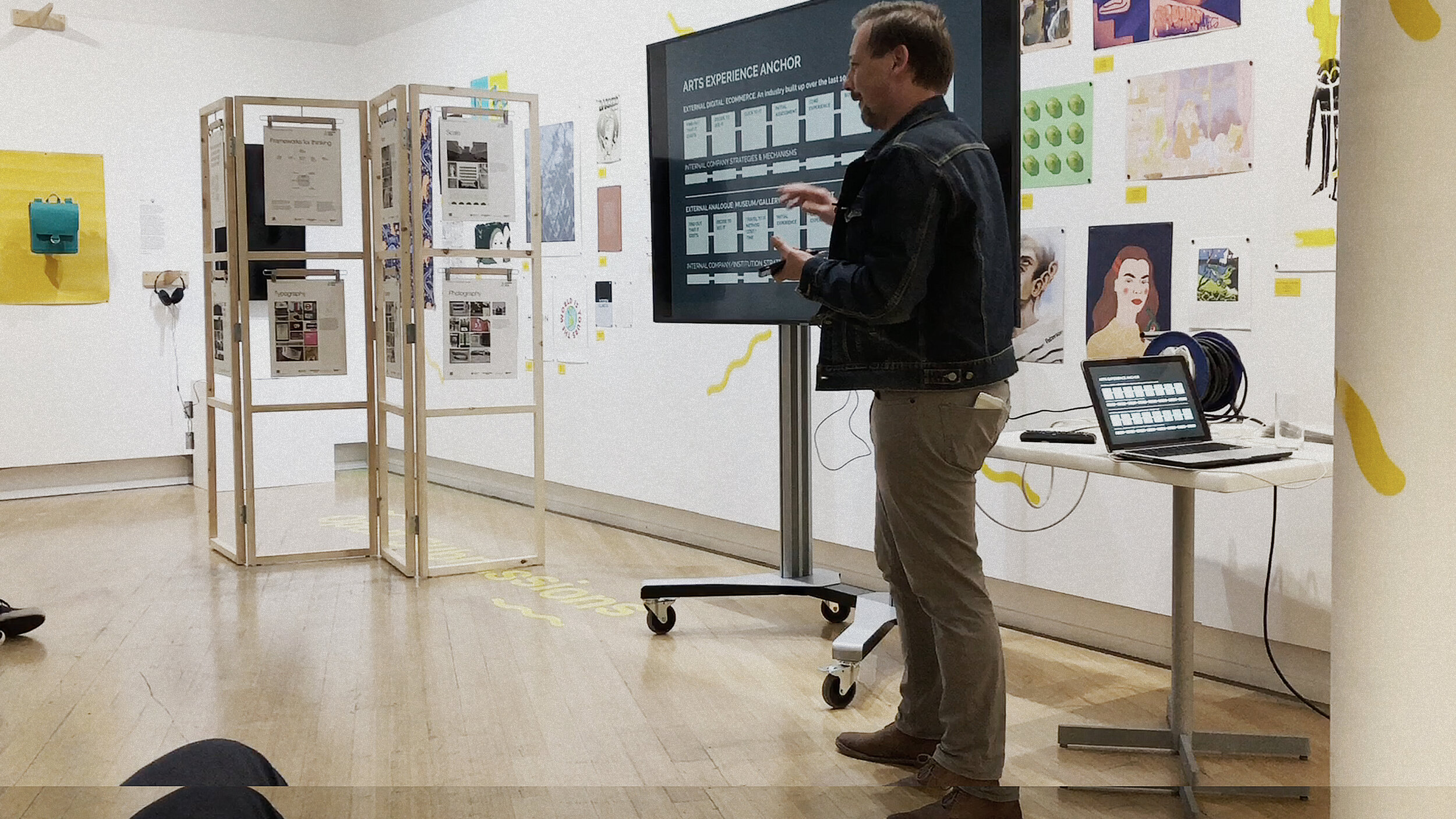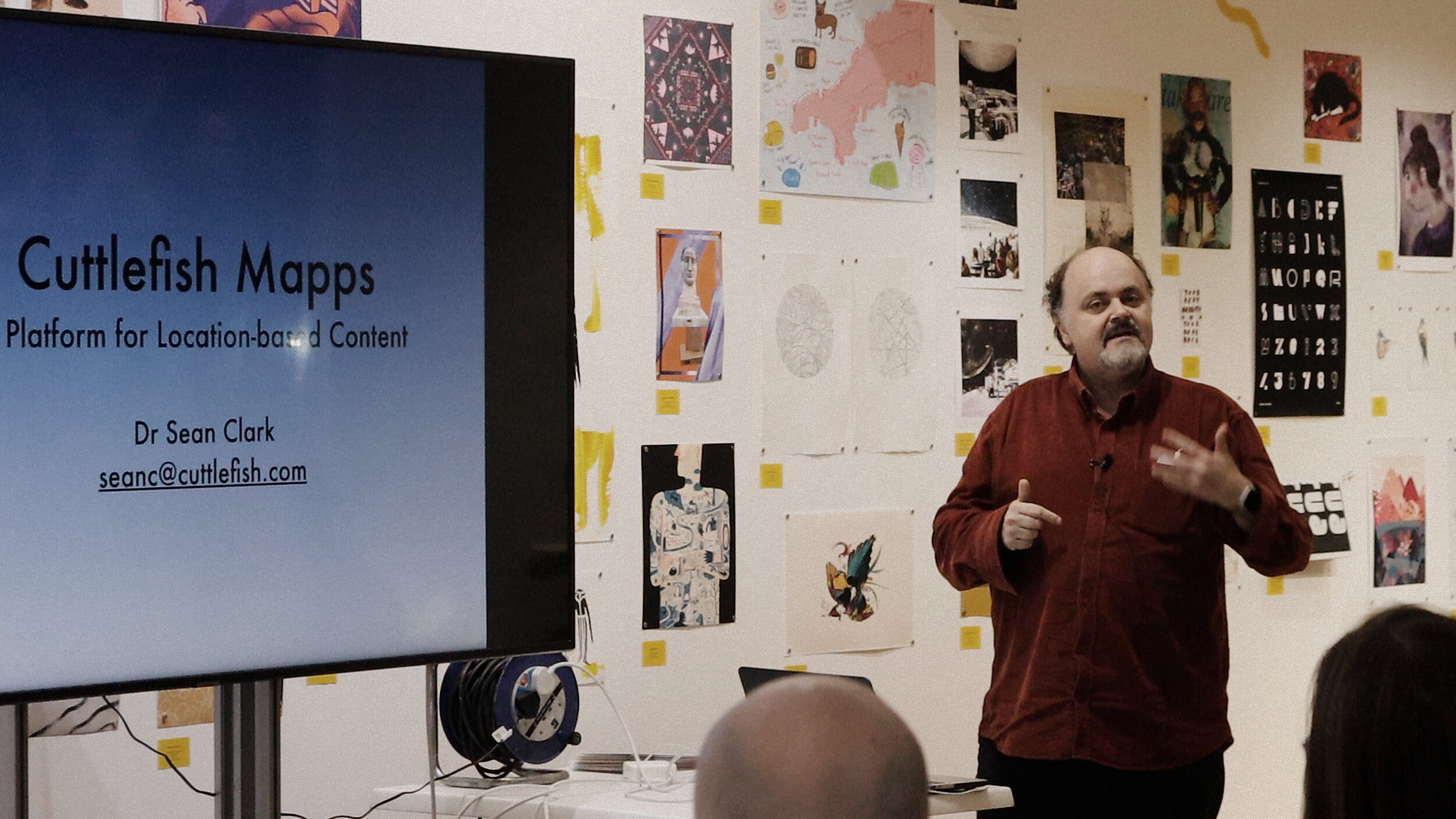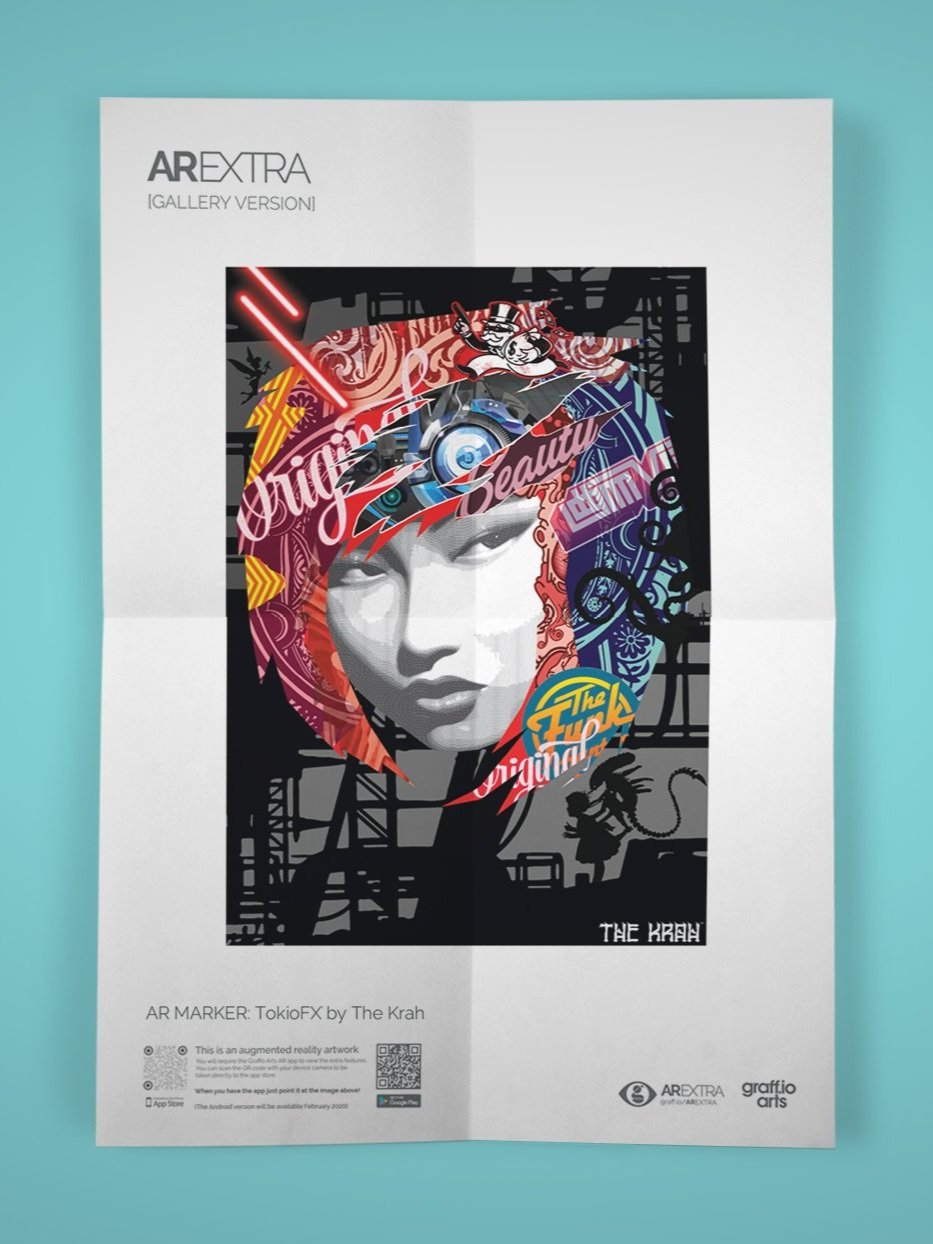CONTEXT
The Institute blog. A collection of information, essays and polemics relating to industry, culture and technology.
Business cannot exist in a vacuum. We examine the nature of ideas, communications and change within our contemporary cultural and technological landscape. We highlight potentially harmful actions and advocate for the freedom, meaning and agency required for human industry to thrive in a complicated and uncertain world.
Aliens, NFTs and the Art of Sharing
As the land grab for virtual assets continues, 18 ALIENS is a light hearted experiment in physical and virtual sharing.
18 ALIENS & ARtv
18 ALIENS was a light hearted experiment in physical and virtual sharing. We gave away 18 sets of aliens on a first come, first served basis at Beta X in Leicester in March 2022.
Concept, design + production: Graffio Arts. Pixels: Jonathan Feuillet. 3D objects + animation: Jack Ellis. The brains behind the Beta X project: Seed Creativity. Funding: LCB. Beta X project manager: Ady Alexander.
Make it stand out
Whatever it is, the way you tell your story online can make all the difference.
Make it stand out
Whatever it is, the way you tell your story online can make all the difference.
Make it stand out
Whatever it is, the way you tell your story online can make all the difference.
Make it stand out
Whatever it is, the way you tell your story online can make all the difference.
Make it stand out
Whatever it is, the way you tell your story online can make all the difference.
WHAT IS ARtv?
ARtv is an augmented reality content delivery system. Show video or activate 3D objects whenever you point your mobile device at an ARtv symbol. Each symbol can be unique and each can deliver it’s own content. A symbol could be a picture, a graphic or a logo.
Symbols can be displayed anywhere that you can imagine - on a poster, a wall or even as a tattoo. If you’d like to find out how you could use ARtv for your project, then get in touch.
Make it stand out
Whatever it is, the way you tell your story online can make all the difference.
Make it stand out
Whatever it is, the way you tell your story online can make all the difference.
18 ALIENS AT BETA X
These aliens have no monetary value and are comprised of pixels. Each alien was presented as an augmented reality marker on a series of cards. These cards can be shared with friends, family or random strangers, as you see fit, sharing your ownership of the alien. Anyone that owns a card can download the Graffio AR app and point it at the card to summon their alien from a galaxy far away!
The concept of virtual ownership is becoming more and more a part of our daily lives. When viewing a movie, we used to purchase a physical product, like a DVD. Now, it is more common to pay a gatekeeper to allow us to stream content. In this interaction, we no longer own a physical object and our access to the content may only be for a limited time. Virtual properties in virtual worlds continue to develop in terms of status and real monetary value.
Crypto currencies are on the rise and NFT systems, designed to protect the intellectual property rights of creators are now a part of a frenzied land grab of virtual assets. Meta seeks to control our experience of the Metaverse. As these new frontiers continue to develop should we stand back and ask what we want from virtual worlds? How do we want to interact with each other? What do we value? Is it all about individual or corporate ownership? Remember when we used to share?
THE POSTERS
Make it stand out
Whatever it is, the way you tell your story online can make all the difference.
Make it stand out
Whatever it is, the way you tell your story online can make all the difference.
Make it stand out
Whatever it is, the way you tell your story online can make all the difference.
Make it stand out
Whatever it is, the way you tell your story online can make all the difference.
Make it stand out
Whatever it is, the way you tell your story online can make all the difference.
Make it stand out
Whatever it is, the way you tell your story online can make all the difference.
ALIEN PERSONALITIES
To establish the idea that each alien was an individual and worthy of collection, each alien had a backstory created. These were brief introductions with a name and a biography that was part hard sci-fi and part, a tongue-in-cheek riff on popular culture.
Make it stand out
Whatever it is, the way you tell your story online can make all the difference.
Make it stand out
Whatever it is, the way you tell your story online can make all the difference.
Make it stand out
Whatever it is, the way you tell your story online can make all the difference.
Make it stand out
Whatever it is, the way you tell your story online can make all the difference.
Make it stand out
Whatever it is, the way you tell your story online can make all the difference.
Make it stand out
Whatever it is, the way you tell your story online can make all the difference.
Make it stand out
Whatever it is, the way you tell your story online can make all the difference.
Make it stand out
Whatever it is, the way you tell your story online can make all the difference.
ALIEN BEHAVIOUR
The aliens had individual sounds, breathed and performed different actions when touched. Some would react if you got within a certain distance from them.
AUGMENTED REALITY AND YOU
A new world is opening up and if things play out in the ways that we are told that they will, it will have an enormous impact the ways that we do things. The increased use of augmented reality technology into our every day lives will likely be accelerated by brands like Apple that are investing huge sum of time and money into transforming our relationship with their current technology. We know this stuff is coming and its likely that we’re going to be using it as an addition or substitute for the technology that we current use. The day that augmented reality glasses become adopted as a mainstream device, is the day where mobile phones may start to look the quaint product of a previous generation.
The 3D aliens in this project use technology that is only currently, universally available on Apple devices although large parts of the project also worked on Android devices. We tend to create projects that have mixed functionality, so that they are as inclusive as possible.
If you’re interested in using some form of AR for a project, we can help you work through the kind of options available. Once you understand the basics and the limitations become clear, the fun starts as you consider all the things that you could do. There is incredible potential for new types of engagement, user journeys, brand associations and relationships to physical locations with augmented reality.
Want to do something incredible with AR? Tell us what you want to do!
Augmented Reality and a Sense of Place
How does graphic design in the urban environment affects your sense of place and how this might change through increased use of AR technology? Discuss!
As part of Design Season and hosted at LCB Depot in Leicester , we were asked to take part in a talk with Dr Robert Harland from Loughborough University and Dr Sean Clark from Interact Digital Arts. We were asked to consider how graphic design in the urban environment affects your sense of place and how this might change through increased use of Augmented Reality technology.
THE PROPOSITION
How does graphic design in the urban environment affect your sense of place? How is this changing through increased use of Augmented Reality technology? What new opportunities does this create for artists and designers? These questions and more will be discussed during this free session involving Dr Robert Harland from Loughborough University, Sean Clark from Interact Digital Arts and the directors of Graff.io Arts. There will also be the launch of Cuttlefish Mapps, a new locally-developed platform for distributing location-based content.
INTRODUCTION
This was the perfect chance for us to unravel our thoughts & idea's about the impact that Augmented Reality will have on communication, the art & design world and culture. Designers are starting to realise that with UX design that there are social/well being implications for their decisions so another discipline in the area of ethics should be brought to the table. With galleries like the V&A experiencing almost x10 the traffic online now, will AR help bring traffic from an online world to experience the physical? Will a city retain the rights to an augmented or virtual world or are we to expect a "land grab" on markers - who is in control? This was also a chance to unveil the Beta for our new Graff.io Arts Augmented Reality app & to demo it on a series of AR artworks.
AN EXCERPT OF THE TALK
We've looked into Augmented Reality and we've thought how do you do this? We've looked into apps that are avail & different technologies, The only way that we could find to really do it is to collab with @swipeandtap. A Leicester based tech company building a prototype Augmented Reality app with us.
We've got some pictures, we can show you some examples of augmented layers later.
We are GA. Small co based in Loughborough, there's only four of us. We do a lot of creative collabs. We say that we're an art shop. This is our opening statement, written about two months ago, And we're finding that it's already out of date.
We are exploring these new areas, which encompass the kind of things that are coming up within that shop experience. If you go to a museum & you're dealing with art in a museum. Or if you're dealing with a shop and you're buying online. There are all these different channels & projects coming up. We've met Sean Clark and formed Gallery Without Walls together. We have Robert ( quote ). There's a lot happening right now locally in Leicestershire. I've worked in London for many years & I'm so glad that I've come back here. I've worked in London for over 20 years and I'm so glad I moved back here - I'm seeing more doors opening here & more easily and more accessibly here.
One of our company agenda's is how can do innovative creative collabs & projects here and not go bankrupt! We're looking at ways of doing this and working out if there are ways possible to stop the "brain drain". Is there any way of doing collaborative projects here and not have to move to the capital. Get as much going on locally as possible.
We've got issues here: We say we are an art shop and we sell online. We also have a problem here where we talk about the real word. What is the real world ?
So we are finding ways that a company, that's traditionally a certain kind of art shop has to change and emerge and go forward. We're looking at all the steps around looking at art and experiencing art and all the things involved in that and how we might have to change with it. That's why we're interested in AR and XR tech, because there are all these different layers.
So this sums up where we're at right now, the genie is out of the bottle! This new tech means things will never be the same.
With Minecraft & Pokemon, the kids are all used to it's commercial. Within the arts, I've been into this since William Gibson in the 90's. It's been in the creative sci-fi and cyber punk mind set for a long time. Now the tech is here for us to finally get on with it !
If we are a company thats looking at selling art or dealing with art, and how does that relate to how a museum or a gallery would deal with it? And the core journeys to experiencing art.
So how do we find out about art?
If there's an exhibition on or a print is online for sale, you don't just wake up and a canvas it lands on your head! you have to find out that it exists. In the analogue world, you might see a physical advert on a bus or get a leaflet & other physical ways that you find out that something's available?
If we were selling stuff online, this might come from a facebook ad or a comment somewhere. If it's a gallery they're putting money into leaflets or it's word of mouth. ~There's all these things going on behind the scenes.
Then how do you decide to see it? If you're online, you might click it - or not. In the analogue space this would be able your initial experience of walking into a gallery space and experiencing the architecture etc. And your REAL experience of the art.
Then your real experience of the work. At this point, we could be looking at how Augmented reality could be used to add more layers to the art. So where you needed for example Paul McCartney to sing there, we could add another layer, we could add Paul McCartney! If it was a painting, we could add an overlay through your phone to give more information about that artist. These things are real tools that help industry and help the arts in different ways. This could be able art or the arts, but we might end up needing teams of people.
So where Robert is talking about physical cities, you've got town planners then engineers, then signage...
If you’d like to talk to us about any of these themes, including augmented reality, gives us a call or email us here.
An Exhibition about Technology and Worthless Art
More and more of our experience of the world is going to be mediated and that includes our experience of the arts.
We were asked by LCB if we had anything for an exhibition for their Lightroom Gallery. AREXTRA Street had just launched as posters aimed at the general public. Those posters were printed onto durable, self-adhesive vinyl, designed to be plastered across empty shop windows. How would we take that into a gallery situation? Would it be appropriate?
FROM THE STREET TO THE GALLERY
AREXTRA [Street version] was a vehicle that used augmented reality to increase exposure to the arts for the general public. This was a system where people walking through the streets of the city could experience the arts without having to visit a gallery. The audience had now changed and now expected to be confronted by the arts.
This was an opportunity to engage with some of the big questions that arise from augmenting art. In this situation a 2D representation of the work is recognised by the technology and used as the platform for augmentation. Traditionally a piece of work within a gallery is considered to be an object. That object is assumed to be loaded with cultural worth. A set of factors are used to agree a monetary worth.
Augmented reality doesn’t play by these rules.
A painting, traditionally using a canvas as the place where paint is applied is now read as an image. Our understanding, development and agreed rules of engagement with painting have changed over time. It could be argued that painting was used in illustrative terms, as imagery at certain points in history but through the 20th century we have developed a sophistication and engagement that recognises the application of paint to a surface as a the battleground where an artists fights through their practice.
The results of this are hung on a wall where this creative fight, the development of their practice is evidenced and forms part of a larger conversation.
AR ignores the physicality of the work and uses a snapshot as the basis for something else. The viewers experience is largely of this something else.
To draw attention to these issues we stripped the art of traditional cultural and monetary value- we called each piece a marker (the thing that AR technology recognises). We printed these onto sheets of paper of a unified size and pinned them to the wall. After the exhibition these sheets of paper had performed their job and were destroyed. Viewers could view the exhibition with our AR app and explore the augmented reality layers- the new focus for this work in this context.
We used Lewis Carroll’s excerpt from Alice in Wonderland to highlight the idea that the genie is out of the bottle. New media technology continues to change the way we interact with the world around us. More and more of our experience of the world is going to be mediated and that includes our experience of the arts.
How would we like to proceed?
THE MARKERS
Goldfinch by Lucy Stevens
Tropics by Alexandru Cinean
Untitled by Cibo
Foliage Tree by Mono
TokioFX by The Krah
Mountains by Paraskevi Papagianni
Untitled by Kris Trigg
Meteora by Cibo
Lights Out by Tyler Spangler















